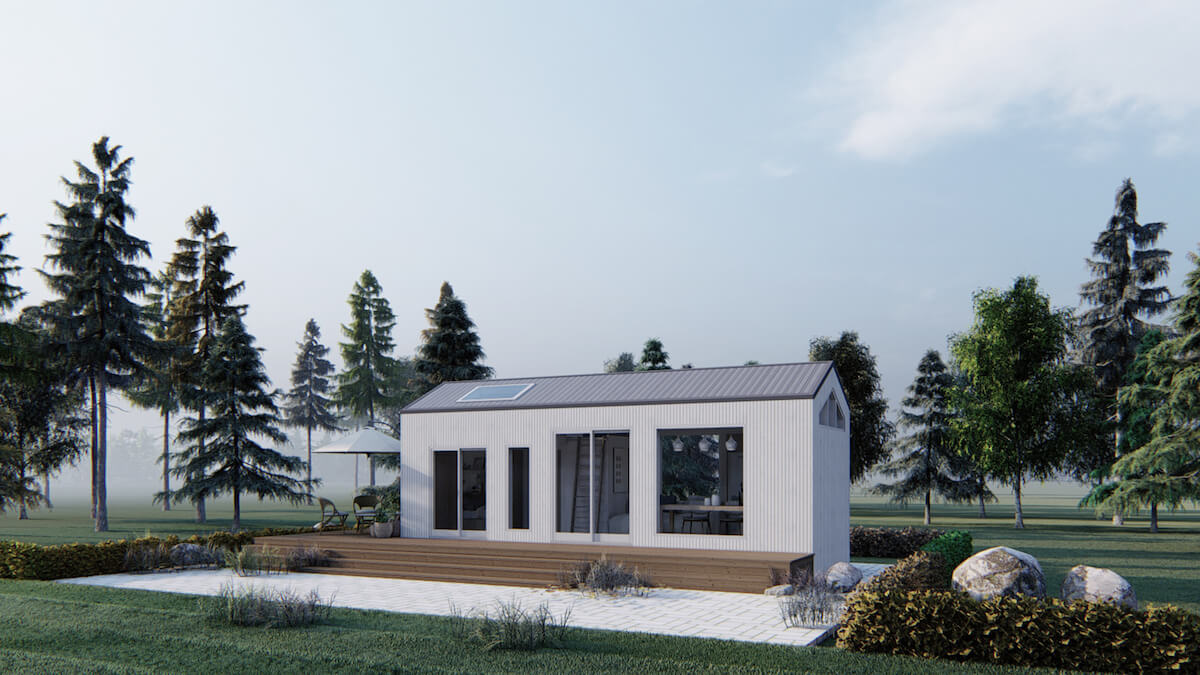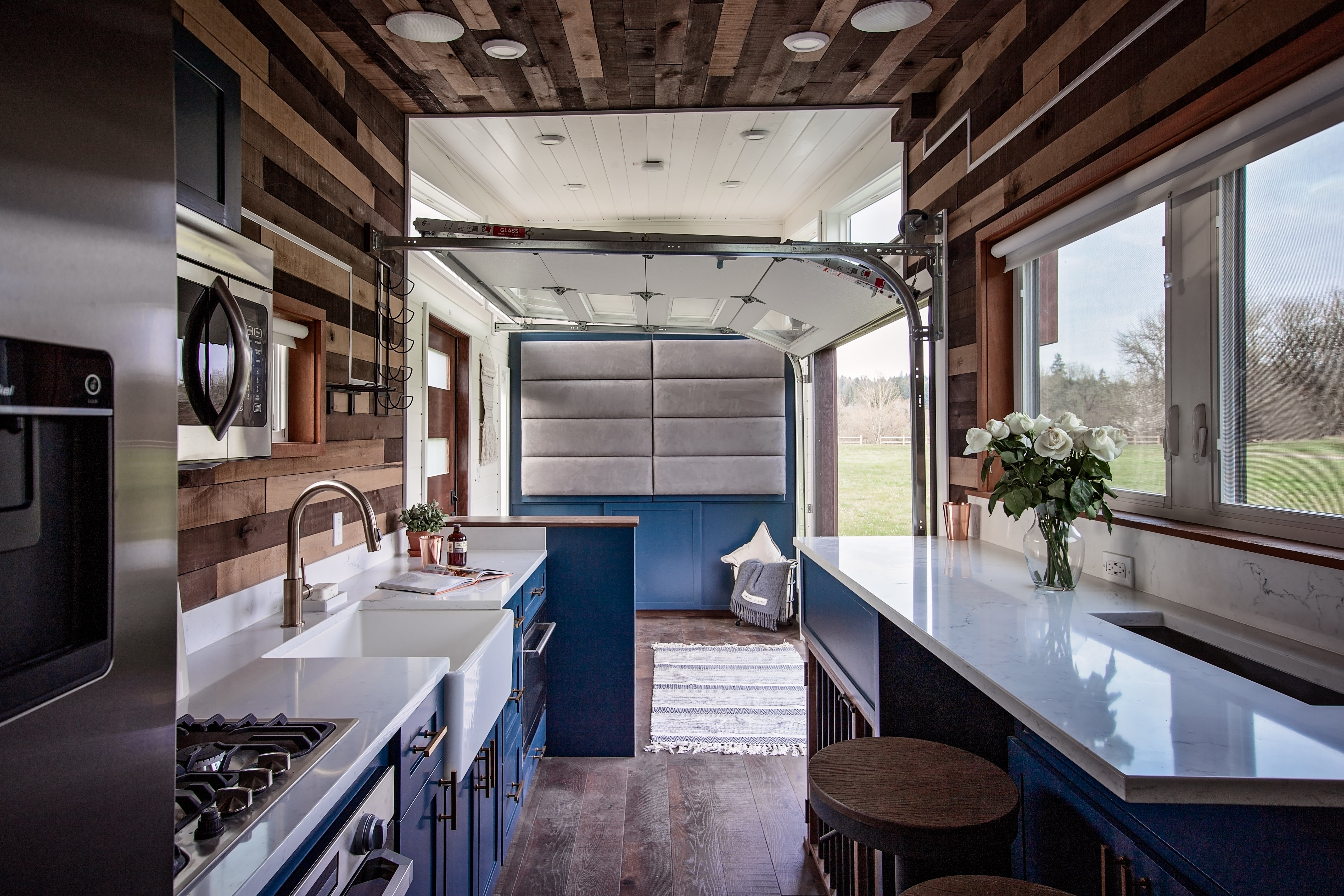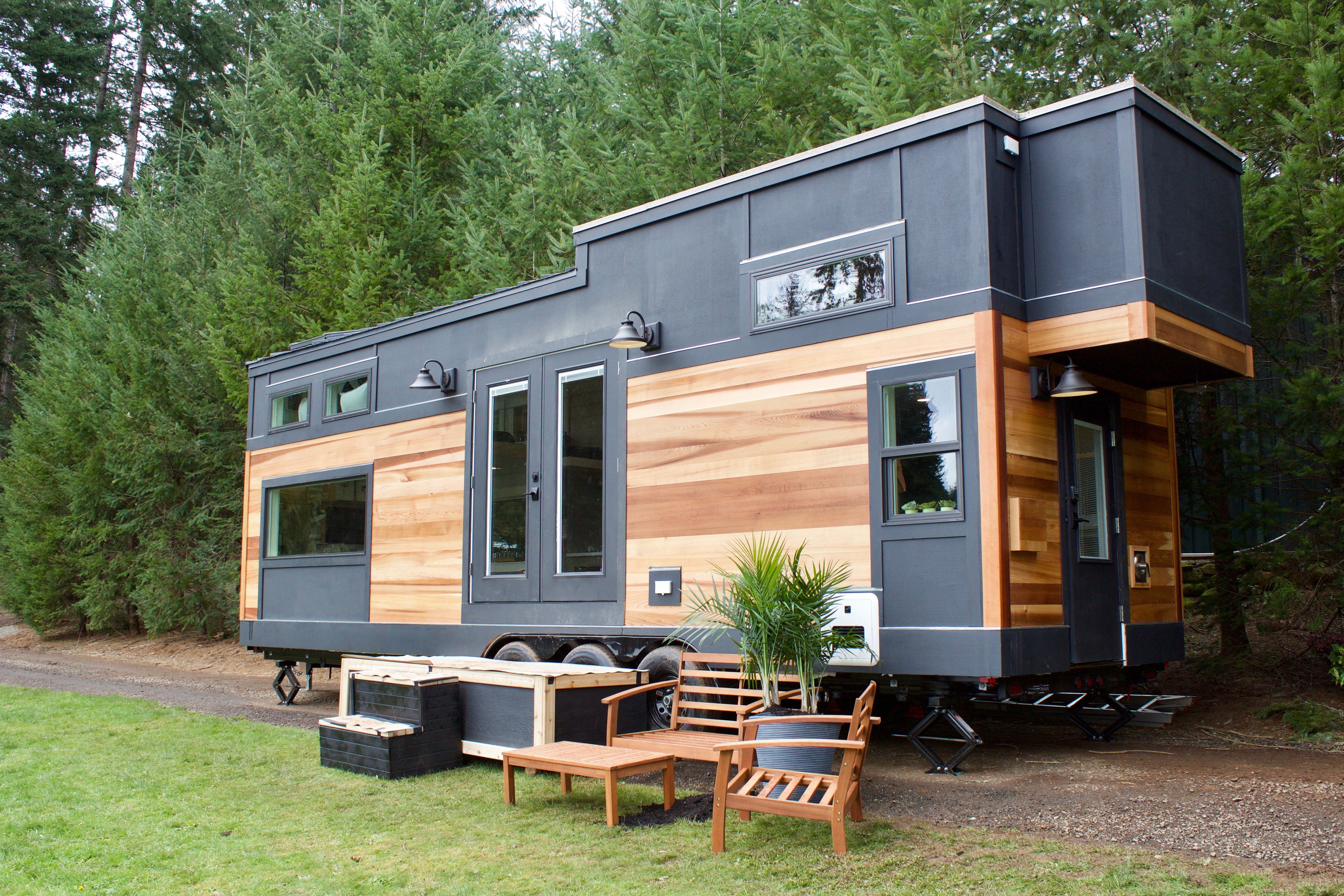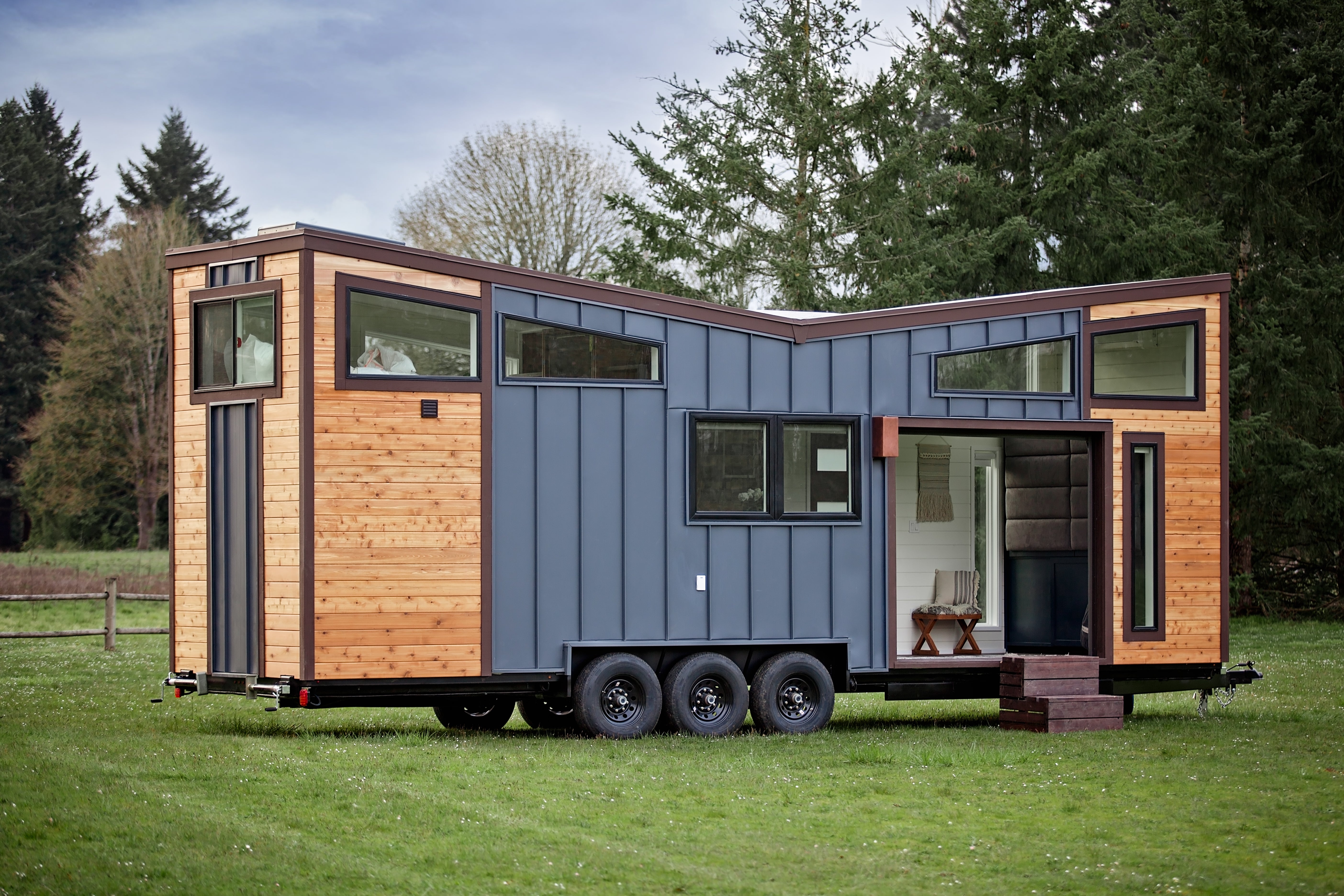Tiny cottage plans and designs are perfect for embracing cozy, sustainable living. They prioritize simplicity and reduce expenses while lowering your environmental footprint. With essential features like open floor plans and multi-functional furniture, these cottages maximize function without sacrificing style.
Consider innovative space-saving solutions like built-in shelves and under-bed storage to keep your space clutter-free. The right location enhances your experience, so envision your ideal surroundings. Discover unique styles and practical tips that can guide you further in your journey.
Check out our cottage tiny house plans.
Key Takeaways
-
Explore open floor plans to create a spacious feel and enhance natural light within your tiny cottage.
-
Incorporate multi-functional furniture to maximize utility and optimize limited living space effectively.
-
Utilize large windows to improve ventilation and connect your indoor living space with the beautiful outdoors.
-
Consider innovative storage solutions like under-bed compartments and built-in shelves to maintain a clutter-free environment.
-
Choose a cottage style that reflects your aesthetic, such as rustic, modern, or Scandinavian, to create a cozy ambiance.
The Benefits of Tiny Cottage Living
When you embrace tiny cottage living, you open the door to a lifestyle that prioritizes simplicity and sustainability. This downsized approach often leads to reduced expenses, allowing you to allocate resources to experiences rather than possessions. With less square footage, you minimize your environmental footprint, leading to lower energy consumption and waste.
Additionally, living in a cozy space encourages you to curate your belongings, fostering a more intentional lifestyle. You’ll likely find joy in the small, meaningful moments, as well as a stronger connection to nature and your community. The intimate scale of a cottage fosters creativity in design and organization, pushing you to innovate and adapt your space to suit your needs while promoting a sense of tranquility and balance.

Choosing the Right Location for Your Cottage
Finding the perfect spot for your cottage can greatly enhance your tiny living experience. Start by considering your lifestyle and preferences—do you crave solitude in nature or proximity to community? Evaluate factors like climate, accessibility, and views. A location with ample sunlight can maximize energy efficiency, while a sheltered spot may offer protection from harsh weather.
Check local zoning laws and land use regulations to avoid future headaches. Proximity to essential services like grocery stores and healthcare is vital for convenience. Finally, envision your daily routines—do you want to wake up to ocean waves or mountain vistas? By carefully weighing these aspects, you'll secure a location that not only complements your tiny home but enriches your overall quality of life.
Essential Features of Tiny Cottage Designs
As you explore tiny cottage designs, you'll discover that their essential features are tailored to maximize both functionality and comfort in a compact space. Open floor plans create a sense of spaciousness, allowing natural light to flow freely. Multi-functional furniture, like a fold-out table or a sofa bed, optimizes every square foot.
Large windows enhance ventilation and provide stunning views, blurring the lines between indoors and outdoors. Thoughtful storage solutions, such as built-in shelves and under-bed drawers, keep clutter at bay while maintaining a cozy atmosphere. Additionally, energy-efficient appliances and sustainable materials contribute to a greener lifestyle. Overall, these features not only enhance livability but also encourage a minimalist lifestyle, perfect for those seeking simplicity and tranquility.
Innovative Space-Saving Solutions
While the charm of a tiny cottage lies in its cozy aesthetics, innovative space-saving solutions play a crucial role in enhancing its functionality. You can maximize every inch by incorporating multi-functional furniture, like a sofa bed or a foldable dining table. Consider built-in shelves that extend to the ceiling; they not only provide storage but also draw the eye upward, creating an illusion of height.
Utilizing under-bed storage can help keep your space clutter-free, while hidden compartments in stairs offer even more room for essentials. Think about sliding doors instead of traditional ones to save floor space. By creatively using vertical space and integrating smart design elements, you’ll achieve a harmonious blend of comfort and practicality in your tiny cottage.
Popular Tiny Cottage Styles and Aesthetics
When you explore the world of tiny cottages, you'll discover a rich tapestry of styles and aesthetics that reflect both personal taste and functional design. From the charming rustic cottage, with its exposed beams and natural materials, to the sleek modern interpretation featuring minimalist lines and large windows, each style tells a unique story.
You might be drawn to the whimsical fairy-tale cottage, adorned with vibrant colors and playful shapes, or prefer a traditional New England style that emphasizes symmetry and classic detailing. Consider the Scandinavian influence, where simplicity meets functionality, creating a cozy yet spacious feel. Each choice you make in design not only enhances the aesthetic but also maximizes the use of space, making your tiny cottage a true reflection of you.

Eco-Friendly Materials for Sustainable Living
Choosing eco-friendly materials for your tiny cottage not only promotes sustainable living but also enriches your space with natural beauty. Opt for reclaimed wood for your flooring and furniture; it’s both durable and adds character. Bamboo, a rapidly renewable resource, serves as an excellent alternative for cabinetry and finishes. Consider using low-VOC paints and finishes to guarantee indoor air quality remains high.
For insulation, recycled denim or cellulose made from post-consumer paper can enhance energy efficiency while being environmentally friendly. When selecting fixtures, solar-powered options reduce energy use and lower utility bills. Incorporating natural stone or sustainably sourced materials for countertops adds elegance while minimizing your ecological footprint. With thoughtful choices, you can create a cottage that's both beautiful and responsible.
Tips for Designing a Functional Layout
To create a functional layout in your cottage, it’s essential to prioritize flow and usability, ensuring that each space serves its purpose without feeling cramped. Start by evaluating how you’ll use each area; consider multi-functional furniture, like a fold-out table or a sofa bed, to maximize utility.
Define clear pathways between spaces to enhance movement, and avoid excessive walls that can disrupt flow. Utilize vertical storage solutions, such as shelving or hooks, to keep surfaces clear and organized. Make use of natural light; strategically placed windows can create an inviting atmosphere while making small areas feel larger. Finally, tailor the layout to your lifestyle—whether you’re entertaining guests or enjoying quiet solitude, your design should reflect your needs.
Personalizing Your Tiny Cottage
While you might think that personalizing a tiny cottage is a challenge due to limited space, it actually offers a unique opportunity to showcase your individuality and style. Start by choosing a cohesive color palette that reflects your personality; soft hues can create a serene atmosphere, while bold shades energize the space. Incorporate multifunctional furniture that serves both aesthetic and practical purposes—think a coffee table that doubles as storage.
Use wall art, textiles, and decor to infuse character; handmade pieces or travel souvenirs tell your story. Don’t forget to maximize vertical space with shelving or hanging plants, adding both charm and functionality. Ultimately, each choice should resonate with who you are, transforming your tiny cottage into a true reflection of yourself.
Budgeting for Your Tiny Cottage Build
How do you effectively budget for your tiny cottage build without overspending? Start by outlining your total budget, considering land costs, materials, labor, and permits. Break down each category into detailed line items; this’ll help you track expenses and identify areas for potential savings.
Calculate the cost per square foot for your desired design, comparing various options to guarantee affordability. Don’t forget to include a contingency fund—typically 10-15% of your budget—for unexpected expenses. Additionally, prioritize essential features over luxury ones and explore DIY options where possible. By staying organized and flexible, you can navigate the budgeting process effectively, making sure your tiny cottage becomes a reality without financial strain. Embrace creativity while sticking to your financial goals!
Check out our cottage tiny house plans.
Conclusion
To sum up, embracing tiny cottage living offers a unique blend of simplicity and creativity. By carefully selecting your location and incorporating essential features, you can create a space that reflects your personality while maximizing functionality.
Innovative design solutions and eco-friendly materials not only enhance your cottage but also support sustainable living. With thoughtful budgeting and a keen eye for detail, you can build a cozy retreat that perfectly suits your lifestyle, proving that less truly can be more.






Share: